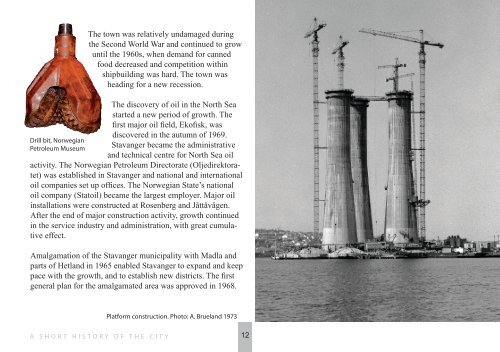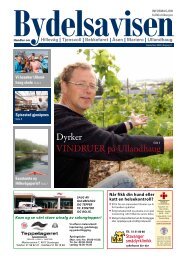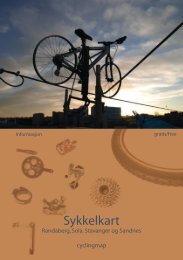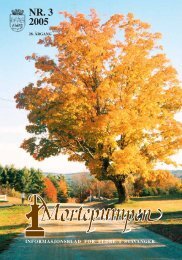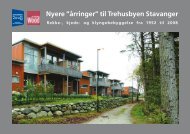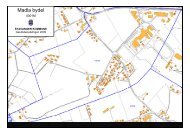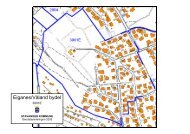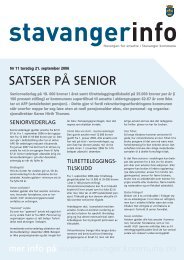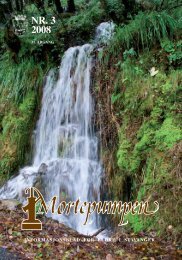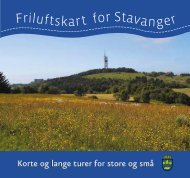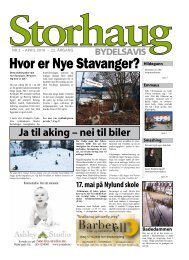Stavanger kommune
Stavanger kommune
Stavanger kommune
You also want an ePaper? Increase the reach of your titles
YUMPU automatically turns print PDFs into web optimized ePapers that Google loves.
Drill bit, Norwegian<br />
Petroleum Museum<br />
The town was relatively undamaged during<br />
the Second World War and continued to grow<br />
until the 1960s, when demand for canned<br />
food decreased and competition within<br />
shipbuilding was hard. The town was<br />
heading for a new recession.<br />
The discovery of oil in the North Sea<br />
started a new period of growth. The<br />
first major oil field, Ekofisk, was<br />
discovered in the autumn of 1969.<br />
<strong>Stavanger</strong> became the administrative<br />
and technical centre for North Sea oil<br />
activity. The Norwegian Petroleum Directorate (Oljedirektoratet)<br />
was established in <strong>Stavanger</strong> and national and international<br />
oil companies set up offices. The Norwegian State’s national<br />
oil company (Statoil) became the largest employer. Major oil<br />
installations were constructed at Rosenberg and Jåttåvågen.<br />
After the end of major construction activity, growth continued<br />
in the service industry and administration, with great cumulative<br />
effect.<br />
Amalgamation of the <strong>Stavanger</strong> municipality with Madla and<br />
parts of Hetland in 1965 enabled <strong>Stavanger</strong> to expand and keep<br />
pace with the growth, and to establish new districts. The first<br />
general plan for the amalgamated area was approved in 1968.<br />
Platform construction. Photo: A. Brueland 1973<br />
A SHORT HISTORY OF THE CITY<br />
12


